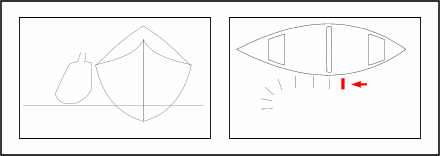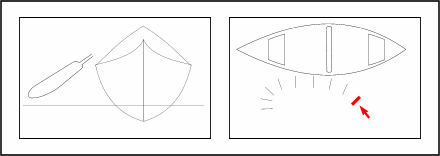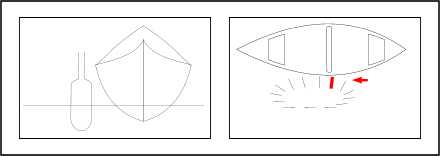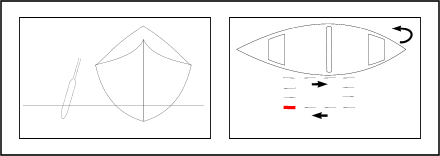 Paddling Skills
Paddling Skills Paddling Skills
Paddling Skills
This is an animated GIF, by Michelle Stacheruk, of the J Stroke as seen from the front of a canoe and from above. This stroke is used to make the canoe go in a straight line when paddling solo. The paddle goes into the water, is pulled back, and turned, like a letter J, at the end of the stroke. You can start and stop the animation with the buttons below.

This stroke is a modification of the J Stroke used to turn towards the paddle side. To increase your turn, start the stroke out from the canoe and draw in towards the canoe before following through with the rest of the J stroke.

This stroke is also known as the underwater stroke. Some people call it the Canadian stroke, but in fact there's a stroke rather between the J stroke and the Indian stroke that is more generally called the Canadian. The Indian stroke is used for paddling a straight course and is very useful against strong winds or running rapids. As you move the paddle forward, rotate the grip of the paddle in the palm of your upper hand. Then you are ready for the next power stroke without taking the blade out of the water. If you do it slowly and carefully, there is no sound from the paddle, making it possible to sneak up on wildlife and get a close view.

The Box-Stroke Pivot is used to make a quick turn while the canoe pivots on the pivot point, using the basics, the stern draw and the bow pry. Starting in towards the canoe with a stern draw, you then knife the paddle through the water to the bow of the canoe. Then you continue with a bow pry (pushing the paddle away from the canoe), until the paddle is far enough away from the canoe in order to make another effective stern draw, after knifing the paddle back to the stern of the canoe. To turn towards the paddle side, reverse the direction of the steps and repeat until you are in the desired direction.

Return to The Canoe Camper's Home Page.